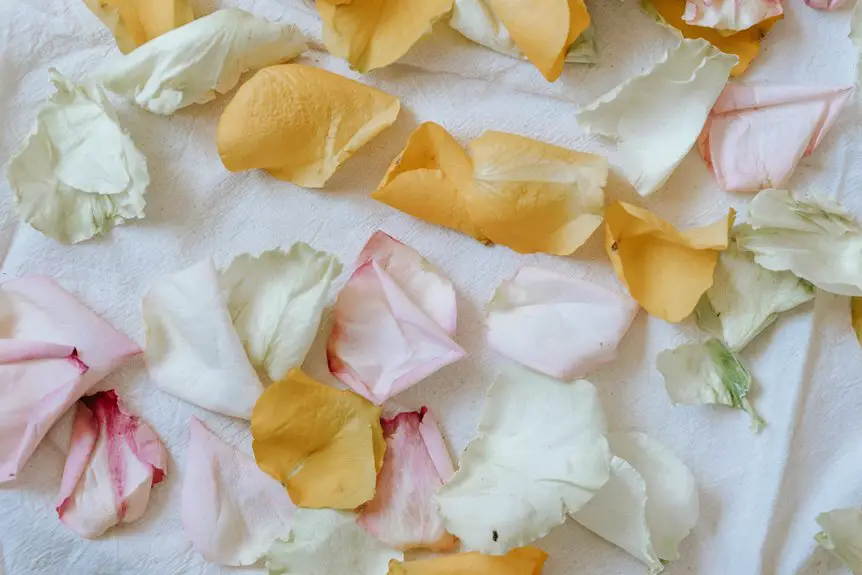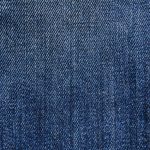You’ll notice single piqué fabric feels lighter, softer, and more breathable, making it great for warm-weather tees and casual wear. Double piqué is thicker and sturdier, offering better durability, shape retention, and a more structured look that’s ideal for polos and uniforms. While single piqué excels in airflow, double piqué handles frequent washing better. If you want to match fabric performance to your needs, understanding these key contrasts will help you choose wisely.
Table of Contents
Key Takeaways
- Single piqué is lightweight with a softer texture, while double piqué is thicker and more durable with a pronounced pattern.
- Single piqué offers better breathability and moisture wicking; double piqué provides moderate moisture control and improved shape retention.
- Double piqué is ideal for structured garments and cooler climates, whereas single piqué suits casual, warm-weather clothing.
- Single piqué uses a simpler weave for flexibility; double piqué employs a complex double-layer weave for firmness and resilience.
- Care differs: single piqué requires gentle washing, while double piqué tolerates machine washing and frequent wear better.
What Is Piqué Fabric?
Piqué fabric is a textured material known for its raised, waffle-like pattern. When you touch it, you’ll notice the subtle bumps that give it a distinct look and feel.
This fabric is woven using a special technique that creates small, repetitive geometric patterns, adding depth and durability. You’ll often see piqué used in polo shirts and sportswear because it combines breathability with a slightly thicker structure, making it comfortable yet sturdy.
Its texture helps wick moisture away, keeping you cool during active wear. Plus, piqué holds its shape well, resisting wrinkles and stretching.
Understanding Single Piqué Fabric
You’ll find single piqué fabric offers a lightweight option with the same textured appeal described earlier.
When you touch it, you’ll notice the distinct raised pattern created by the weaving technique, giving it a subtle waffle-like feel. This fabric is breathable and soft, making it ideal for warm-weather clothing like polo shirts and summer dresses.
Because it’s less dense than double piqué, single piqué drapes more fluidly and feels lighter on your skin. It also tends to be more affordable and easier to care for, which is great if you want something low-maintenance yet stylish.
If you’re after a fabric that balances texture, comfort, and breathability without extra bulk, single piqué is a smart choice.
Characteristics of Double Piqué Fabric
Although it’s heavier than single piqué, double piqué fabric provides greater durability and structure, making it ideal for garments that need to hold their shape well.
When you choose double piqué, you’ll notice its firm feel and resistance to stretching or sagging over time.
Here are key characteristics you’ll appreciate:
- Thicker Texture – Offers a substantial hand feel, perfect for more tailored looks.
- Enhanced Resilience – Stands up better to frequent washing and wear.
- Improved Shape Retention – Keeps collars and edges crisp without extra stiffeners.
- Less Breathability – Slightly reduced airflow compared to single piqué, but still comfortable.
These qualities make double piqué a smart choice for polos, sportswear, and structured casual wear.
Weave and Texture Differences
While double piqué offers durability and structure, the differences in weave and texture between single and double piqué fabrics play a big role in how each feels and performs.
Single piqué uses a simpler weave, creating a lighter, more open texture with subtle raised patterns. You’ll notice it feels softer and more flexible, making it ideal for casual wear.
Single piqué’s simple weave creates a soft, flexible fabric with subtle texture, perfect for casual comfort.
On the other hand, double piqué features a more complex double-layer weave, producing a thicker fabric with a pronounced, textured surface. This gives it a sturdier hand and a more refined appearance.
When you touch double piqué, you’ll sense its firmness and depth, whereas single piqué feels airier and less dense.
Understanding these differences helps you pick the right fabric based on the texture and durability you want.
Breathability and Comfort Comparison
When choosing between single and double piqué, you’ll notice differences in how each fabric handles moisture and airflow.
Single piqué tends to wick sweat away faster, keeping you dry during activity.
Meanwhile, double piqué offers a bit more structure but may feel less breathable in hot conditions.
Moisture Wicking Efficiency
How well a fabric manages moisture can make all the difference in your comfort during wear.
Single piqué fabric, with its lighter weave, lets sweat move quickly from your skin to the surface, where it evaporates faster.
Double piqué, being thicker, absorbs moisture but releases it more slowly, which can leave you feeling damp longer.
Here’s how they differ in moisture-wicking efficiency:
- Single piqué pulls moisture away rapidly, keeping you dry during activity.
- Double piqué holds moisture closer to the skin, offering less immediate dryness.
- Single piqué suits high-sweat situations with quick evaporation.
- Double piqué provides moderate moisture control, better for low-intensity wear.
Choosing the right piqué depends on your activity and how dry you want to feel.
Airflow and Ventilation
Two key factors determine how comfortable a fabric feels on your skin: airflow and ventilation.
Single piqué fabric, with its lighter and more open weave, allows air to circulate freely, making it highly breathable. This means you’ll stay cooler and feel less sweaty during warm days or intense activities.
On the other hand, double piqué fabric is denser due to its double-layer construction, which restricts airflow slightly. While it still offers decent ventilation, it’s better suited for cooler conditions or when you want a bit more structure in your garment.
If you prioritize maximum breathability and comfort in hot weather, single piqué is the way to go. But if you want a balance between airflow and durability, double piqué won’t disappoint.
Durability and Longevity Factors
You’ll want to contemplate how each fabric holds up over time since wear resistance varies between single and double piqué.
Also, the way you care for them can affect their lifespan considerably.
Let’s look at what maintenance each type requires to keep your fabric looking great.
Wear Resistance Comparison
Although both single piqué and double piqué fabrics offer distinct textures and appearances, their durability varies considerably. When you choose between them, understanding wear resistance helps guarantee your fabric stands up to daily use.
- Single piqué, with its lighter knit, tends to show wear faster, especially in high-friction areas like elbows.
- Double piqué’s thicker, tighter weave resists abrasion better, maintaining its texture longer.
- Over time, single piqué may develop pilling or thinning, while double piqué holds shape without significant degradation.
- Double piqué’s structure also better withstands stretches and pulls, reducing the chance of fabric fatigue.
Knowing these differences helps you pick the right piqué for garments or upholstery that need lasting performance.
Maintenance and Care
Understanding how single and double piqué fabrics respond to wear sets the stage for proper maintenance and care, which directly impact their durability and longevity.
Single piqué, being lighter, benefits from gentle washing in cold water and air drying to prevent shrinking and maintain texture.
Double piqué, thicker and more robust, tolerates machine washing better but still thrives with mild detergents and avoiding high heat drying.
For both, avoid bleach and harsh chemicals that can weaken fibers.
Iron on low heat if necessary, turning the fabric inside out to protect the surface.
Regular care tailored to each fabric type helps you preserve their look and feel longer, ensuring your garments stay comfortable and stylish wear after wear.
Common Uses for Single Piqué
Since single piqué fabric offers a lightweight yet textured feel, it’s ideal for casual clothing like polo shirts and summer dresses.
Single piqué’s lightweight texture makes it perfect for casual, breathable pieces like polo shirts and summer dresses.
You’ll find it perfect when you want breathable, comfortable garments that still look polished. Its subtle texture adds visual interest without overwhelming your outfit.
Here are common uses for single piqué:
- Polo shirts – classic, breathable, and stylish for everyday wear
- Summer dresses – light and airy with a gentle texture
- Casual shorts – comfortable with a slight stretch
- Lightweight jackets – perfect for layering in mild weather
When you choose single piqué, you get a fabric that’s versatile enough for warm weather and casual looks while maintaining durability and style.
Typical Applications of Double Piqué
Double piqué fabric offers a thicker, more structured feel that suits garments requiring durability and a polished look. You’ll find it in polo shirts designed for active wear, uniforms needing a professional appearance, and outerwear that demands sturdiness. Its texture provides both breathability and resilience, making it ideal when you want style paired with function.
| Application | Why It Works |
|---|---|
| Polo Shirts | Durable yet breathable |
| Uniforms | Structured, professional look |
| Outerwear | Resistant and long-lasting |
When you pick double piqué, you’re choosing fabric that holds its shape well and withstands regular wear, perfect for pieces that need to maintain a crisp look over time.
How to Choose Between Single and Double Piqué
How do you decide whether single or double piqué fabric suits your needs best? Start by considering the purpose and feel you want. Single piqué offers a lightweight, breathable texture ideal for casual wear, while double piqué provides extra thickness and durability for more structured garments.
Here’s how to choose:
- Climate: Pick single piqué for hot weather; double piqué works well in cooler conditions.
- Garment Type: Use single piqué for T-shirts and polos; double piqué fits jackets and heavier polos.
- Durability: Double piqué lasts longer and resists wear better.
- Appearance: Single piqué has a finer texture; double piqué shows a more pronounced pattern.
Weigh these factors to select the fabric that matches your style and function perfectly.
Frequently Asked Questions
Can Single or Double Piqué Be Used for Upholstery?
You can use both single and double piqué for upholstery, but double piqué is usually better since it’s thicker and more durable. Single piqué works for light-use furniture, but it might wear out faster.
How Do Care Instructions Differ Between Single and Double Piqué?
Imagine gently washing delicate waves; with single piqué, you’ll use cooler water and mild detergent. Double piqué’s thicker texture lets you handle slightly warmer washes, but always air dry both to keep their texture crisp and fresh.
Are Single and Double Piqué Fabrics Environmentally Sustainable?
You’ll find sustainability depends more on the fiber source than the weave. Both single and double piqué can be eco-friendly if made from organic cotton or recycled materials, but conventional options may have a bigger environmental impact.
What Dyes Work Best on Single Versus Double Piqué Fabric?
Did you know 70% of textile dyes are reactive? You’ll find reactive dyes work best on single piqué’s natural fibers, while double piqué, being thicker, absorbs acid dyes better for vibrant, lasting colors you’ll love.
Can Piqué Fabric Be Blended With Other Materials?
You can definitely blend piqué fabric with other materials like cotton, polyester, or spandex to enhance durability, stretch, or comfort. This mix improves performance while keeping piqué’s unique texture and breathability intact.
- The Pros and Cons of Nonwoven Polypropylene Bags - July 11, 2025
- Key Characteristics of Spunbond Polypropylene Nonwovens - July 11, 2025
- The History and Evolution of Nonwoven Fabrics - July 11, 2025







